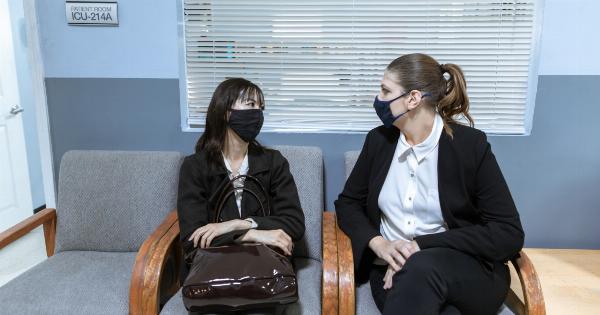As the world grapples with an ongoing pandemic, the lives of countless individuals have been thrown into turmoil. Among the most vulnerable are the 35 patients at risk, who face a myriad of challenges and uncertainties in these difficult times.
In this article, we will explore the various factors that put these patients at risk and the impact the pandemic has had on their lives.
1. Underlying Health Conditions
Many of the 35 patients at risk from the pandemic have pre-existing underlying health conditions.
These conditions range from respiratory illnesses such as asthma and chronic obstructive pulmonary disease (COPD) to cardiovascular diseases, diabetes, and weakened immune systems. The presence of these conditions makes them more susceptible to developing severe symptoms if infected with the virus.
2. Age
Another significant factor that puts these patients at risk is their age. The elderly population has been identified as one of the most vulnerable groups when it comes to the impact of the pandemic.
Their immune systems may be weaker, making it harder for them to fight off infections, and age-related chronic conditions further complicate their health status.
3. Limited Access to Healthcare
For many of the 35 patients at risk, accessing healthcare services during the pandemic has become a challenge. Overburdened hospitals and restricted medical resources have resulted in delayed or inadequate care for these individuals.
The fear of contracting the virus also deters some patients from seeking necessary medical attention, putting their health further at risk.
4. Increased Isolation
The pandemic has brought about a shift in our social interactions, with measures such as lockdowns and social distancing becoming the norm. This has led to increased isolation for at-risk patients, especially those living alone or in nursing homes.
The absence of regular social contact and support networks can negatively impact their mental and emotional well-being.
5. Disruption of Routine Medical Care
Many patients at risk rely on routine medical care to manage their conditions and maintain their health. However, the pandemic has disrupted the availability and accessibility of these services.
Cancelled or postponed appointments, limited access to medications, and decreased availability of specialized care have made it challenging for these patients to receive the essential treatment they need.
6. Impact on Mental Health
The pandemic and its associated restrictions have taken a toll on the mental health of many individuals, including the 35 patients at risk. Feelings of fear, anxiety, and uncertainty are heightened, exacerbating pre-existing mental health conditions.
The lack of social support and increased isolation further contribute to their psychological distress.
7. Financial Strain
The economic downturn caused by the pandemic has resulted in financial strain for many individuals, including those at risk. Job losses, reduced working hours, and increased medical expenses create additional burdens for these patients.
Limited financial resources can impact their ability to access necessary healthcare, medications, and other essential needs.
8. Lack of Support Services
The pandemic has led to a reduced availability of support services for at-risk patients. Community organizations, support groups, and programs that cater to the needs of these individuals have either shut down or scaled back their operations.
The absence of these services leaves many patients without the necessary assistance to cope with their health conditions.
9. Fear and Anxiety
Fear and anxiety have become prevalent emotions among the 35 patients at risk. The fear of contracting the virus, the anxiety surrounding the uncertainty of the future, and the worry about their health exacerbate their vulnerability.
These emotions can further compromise their overall well-being and quality of life.
10. Educational Gaps
For patients at risk who require ongoing education and training to manage their health conditions, the pandemic has created significant challenges.
The closure of educational institutions, limited access to healthcare professionals, and reduced availability of educational resources make it harder for these individuals to stay informed and up-to-date on best practices for self-care.
Conclusion
The lives of the 35 patients at risk have been profoundly affected by the ongoing pandemic. From underlying health conditions to limited access to healthcare and disrupted routine medical care, these individuals face numerous challenges.
We must recognize and address their unique needs to ensure their safety, well-being, and quality of life during these unprecedented times.






























